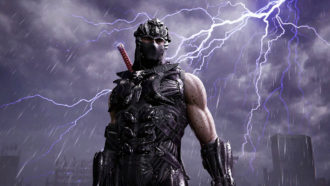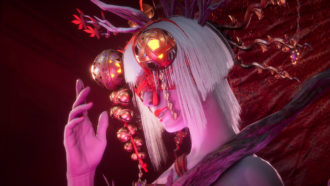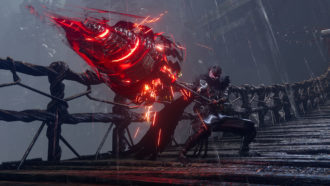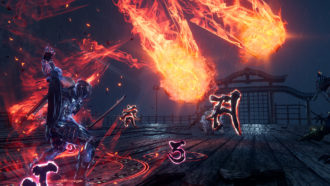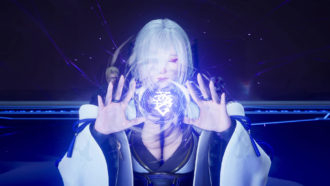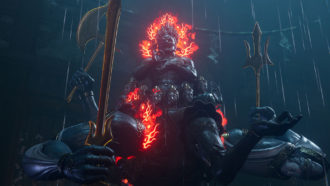Ninja Gaiden 4 is quite the anticipated title for me. This wasn’t made any easier thanks to the stellar opening hours of the game I recently got to experience at PlatinumGames’ offices. Following that, I had a lot of burning questions to ask about what to expect from the ninja action game upon full release in October. Thankfully, I got to sit down with the core creative team for the project: Art Director Tomoko Nishii, Lead Composer Masahiro Miyauchi, and Level Design & Environment Lead Yudai Abe. What came out of that talk was the picking of some of the most creative minds in the industry, leaving me only more excited to see the return of the fantastic ninja series.
What we know so far about Ninja Gaiden 4 is that the adventure is set in a rainy and dilapidated cyberpunk Tokyo. This is expected from the game, given it’s following up after the events of Ninja Gaiden 3. Playing as newcomer Yakumo, this setting feels incredibly realised; there’s a gorgeous apocalyptic metro landscape where a dragon made of machine and cords and coils lingers, and electronic billboards are on the fritz. Since co-developer PlatinumGames has several offices across Japan, including in Tokyo itself, I was curious to pick the team’s brain about what it’s like to re-invent and develop a landscape based on locations they often see in their everyday lives.
One of the big frames of reference for the game is Sky City Tokyo, the opening mission of Ninja Gaiden II. Abe-san elaborates on this: “Even though Tokyo is the stage for the game, we’re not basing it on a real Tokyo. We’re not looking to make it a realistic location. We’re basing it on Sky City Tokyo and going for an exaggerated sense of the stages as well. We really wanted to make something that people will take a look at and be very surprised by it, find exciting and exceed their expectations.”
Team Ninja and PlatinumGames have achieved this goal thus far. The world of Ninja Gaiden 4 feels both grounded and gloriously alien. You’re exploring environments with familiar iconography (be it tori gates or shrines), but in the next breath, you’re fighting cybernetic trolls and watching the world crumble around you due to a digital virus that has affected the cyberspace you’re navigating. It leaves you with this wonderful and curious sense of place that invites curiosity as you’re wallrunning, jumping, and hacking and slashing through an onslaught of ninja and samurai.
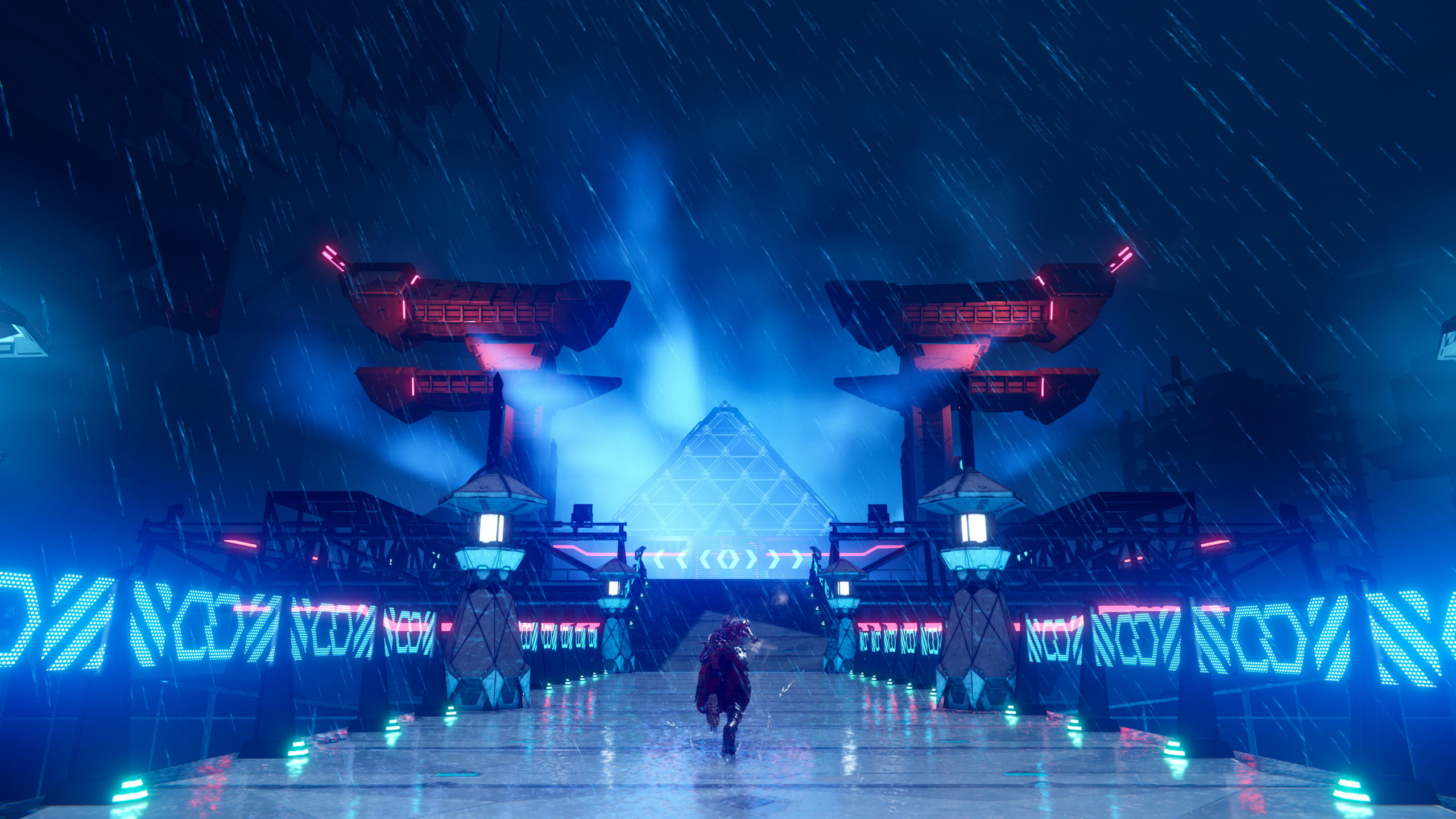
Further to that, with Ninja Gaiden 4 being the first mainline franchise entry in over a decade, I asked what they’ve perhaps been able to do with the game on a technical standpoint that they weren’t able to all those years ago. Nishii-san speaks on the stoic design of the original franchise and how this was not something they wanted to interfere with:
“The action and the combat are definitely things we wanted to carry over from the previous games.” No cause for alarm there, and that checks out with what I’ve played thus far. She continues: “With this game, since it’s set in Tokyo, we were looking to incorporate a Japanese taste in terms of the way that it looks. Since the game is known for its fast speed, we wanted to be able to portray that element, and I think we were able to incorporate that with some of the cyberpunk elements as well. We wanted to really mix all of these aspects together to update the visual style for the game.”
“The combat grittiness and feeling of enemies about to kick your teeth in at any moment remains, bolstered by more cyberpunk aesthetics than we’ve gotten in the past.”
This sentiment is incredibly true of the build I’ve played of Ninja Gaiden 4. The combat grittiness and feeling of enemies about to kick your teeth in at any moment remains, bolstered by more cyberpunk aesthetics than we’ve gotten in the past. There’s a lot of rich blues and reds in the game’s colour palette, partnered with countless flashy particle effects and setpiece sequences to dazzle you. Though you’re set in a cyberpunk dystopia, you’re essentially playing through an action game utopia. Abe speaks on the things they’re proud of achieving is the flashiness of it all. They specifically shout out a sequence where you’re grinding along rails in the middle of the Tokyo skies, a big takeaway from my hands-on preview. “When you play the game, you’re able to see a rail sequence where the route takes you off into the skies. I think we’re able to bring out this sort of speediness, which is something I think we haven’t seen in past Ninja Gaiden games.”
A recurring theme for this discussion was ideas of both studios bettering and refining their craft. It seems like a dream project where it’s Team Ninja returning to their beloved IP and PlatinumGames are using their valour to bring their flavour. Abe teases one last thing, though: “There’s elements of humour that we haven’t seen in the past. We can’t get into it right now, but we hope you look forward to that.” What this means for the game, I don’t yet know, as I’ve only seen fragments of jokes in dialogue. Don’t go in expecting Borderlands levels of in-your-face jokes then, but perhaps remain a cautious curiosity about what that looks like come full release.
I can’t overstate enough how playing Ninja Gaiden 4 feels like the love child of both studios. You’re getting that iconography that you know and love from the series, but you’re also scoring the added bonus of the PlatinumGames feel and style. I asked the trio about what themes or motifs they’re looking at pulling from either prior games in the series or from their other catalogue of games.
Miyauchi-san stepped up to the plate first to talk about the soundtrack of Ninja Gaiden 4: “I took a lot of reference from a lot of different games. If I were to be specific as to what kind of works, I would have to say that it’s previous games in the series that I reference. Within this game, you can find remasters of some of the music from the previous games. There are also some niche tracks that are in there that if certain fans are able to recognise, I’d be very happy.”
This excitable chatter continues into answers from both Nishii-san and Abe-san. Both confessed they couldn’t think of any specific works they were pulling from, but Abe stated, “We want to give that Platinum element, that feel, to the game. Having this opportunity to work on such a well-known and unique, and different action game, we wanted to make sure that whatever we do with it, we make it better than the past.”
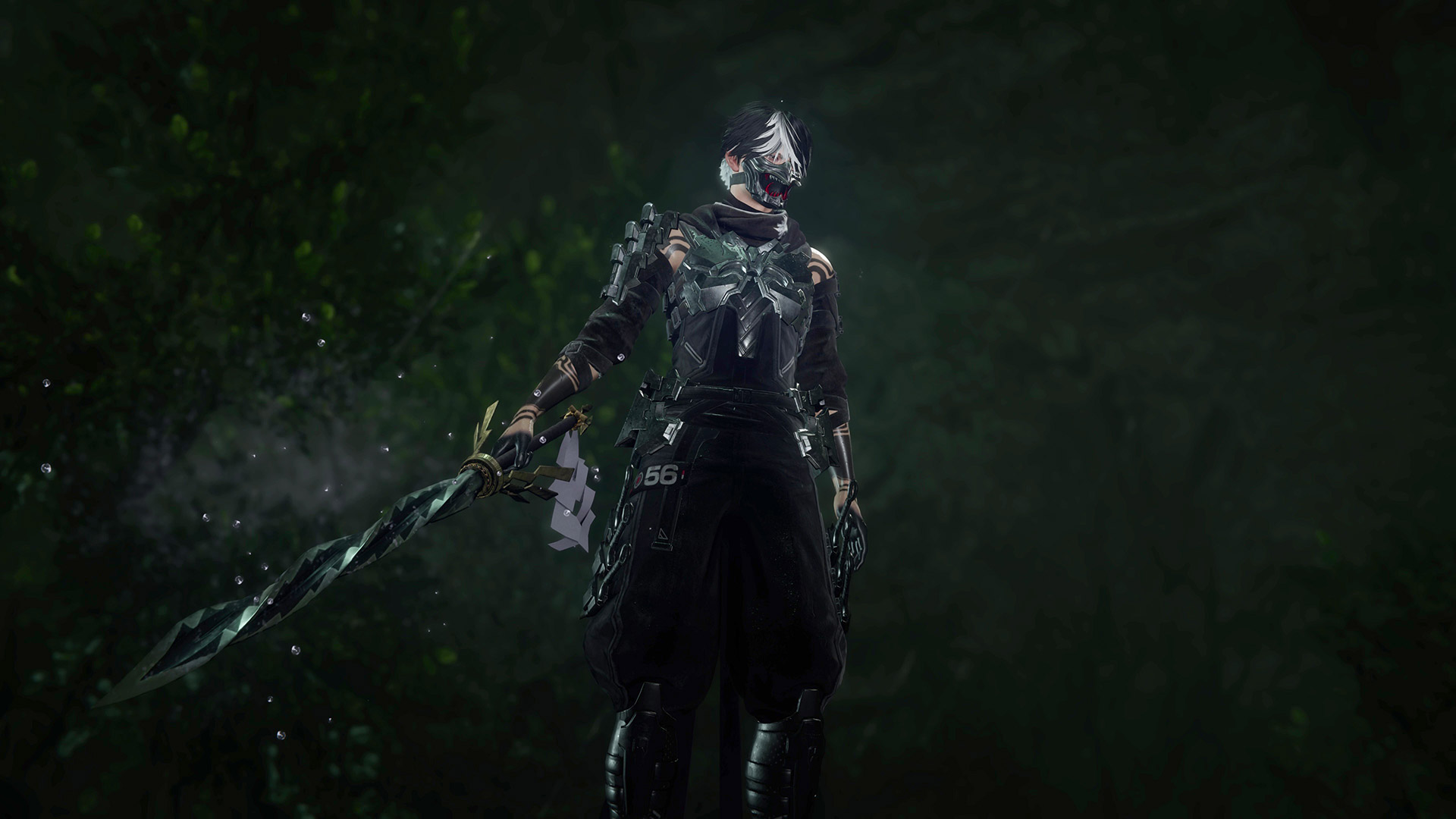
If you ask me, these answers from the group are quite modest and selling themselves short. Ninja Gaiden 4 feels like a wonderful concoction, thus far, of everything both studios have done prior. There is, of course, the fan service when it comes to female designs that Team Ninja are known for, visible in-game when it comes to key figure Seori, a priestess in containment wearing essentially a sultry version of a straitjacket. There’s the climactic boss fight against a big bouldering cyber samurai that has a backing rock track with vocals that feels ripped out of PlatinumGames’ 2013 title Metal Gear Rising: Revengeance. There’s that refinement, yes, but it’s all wrapped up in an entirely new package that I have no doubt will excite and delight both newcomers and series veterans alike.
One of the last things I got to say to the three developers was how much Ninja Gaiden 4 is simply a collaboration that makes sense. It’s both companies working on their bread and butter, coming together to serve a banquet feast for their audience. You could feel the passion in the room; I have no doubt in my mind that they understood the assignment. When Ninja Gaiden 4 lands in October, it is going to be big, triumphant and a bloody good action game. Frankly, I can’t wait.
After more Ninja Gaiden 4 coverage? Check out our hands-on preview and our other interview with the directors of the game.
—
Checkpoint Gaming was flown to Tokyo as a guest of Xbox for this Interview.
